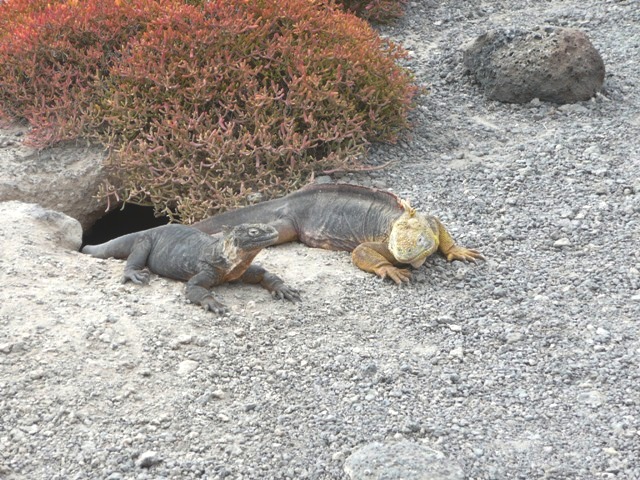
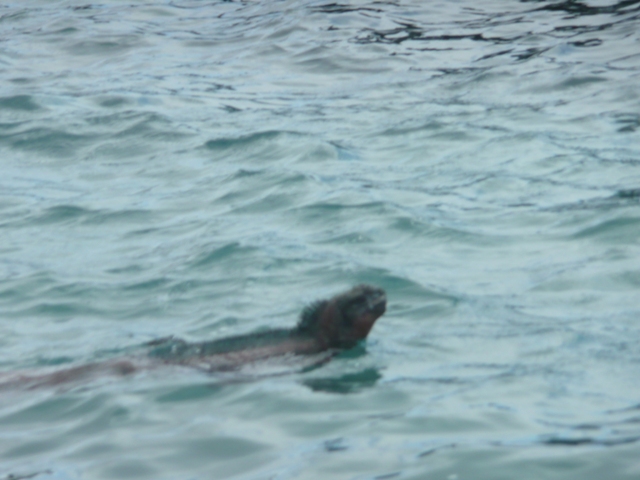
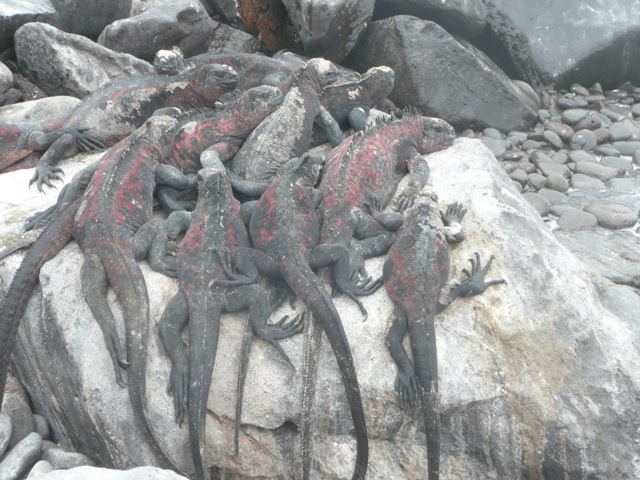
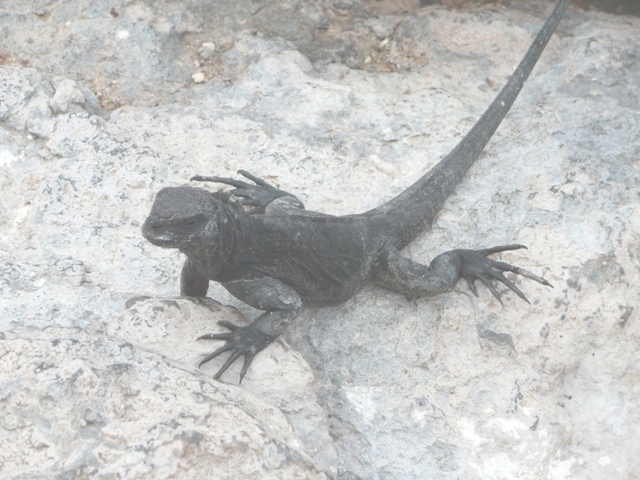
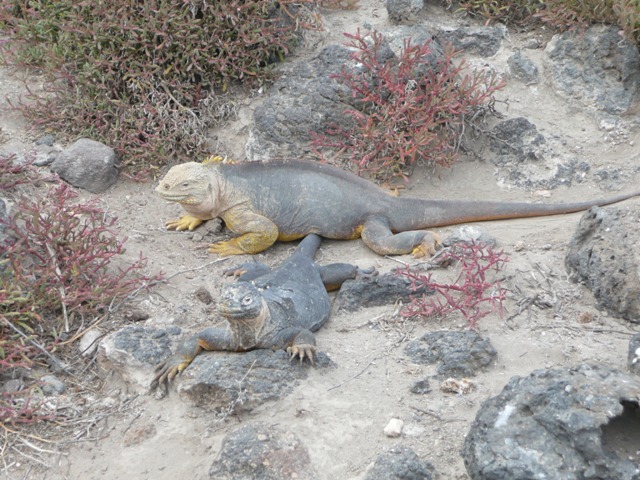
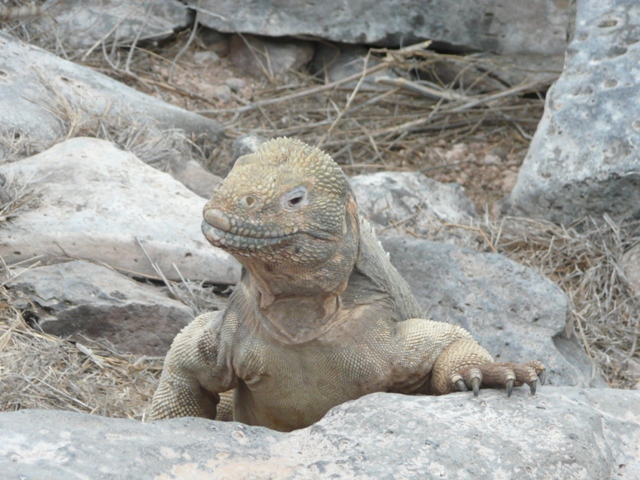
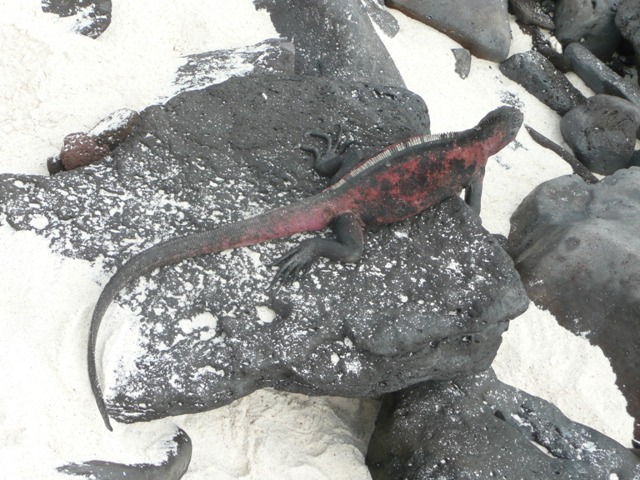
 Iguanas on the Galapagos islands come in a range of colours from a sandy yellow through red to black. No doubt a taxonomist would know the various names, but I shall refer to them by their colour. Their latin names are probably translations of red, black and yellowish anyway.
Iguanas on the Galapagos islands come in a range of colours from a sandy yellow through red to black. No doubt a taxonomist would know the various names, but I shall refer to them by their colour. Their latin names are probably translations of red, black and yellowish anyway.
 It cannot be said that they are the prettiest of animals, seeming to have skin handed down by a larger and rather careless relative that has grown out of it, the ones we met had a rather battered look, but that might be camouflage.
It cannot be said that they are the prettiest of animals, seeming to have skin handed down by a larger and rather careless relative that has grown out of it, the ones we met had a rather battered look, but that might be camouflage.
 They seemed happy enough, although their expressions don't give much away, and generally took no notice of us. The larger yellow ones did at least spare us a glance, especially the one at the top here when it noticed a cactus flower between us. This type of Iguana can be found waiting patiently beneath a cactus the size of a tree in the hope that a flower will fall off.
They seemed happy enough, although their expressions don't give much away, and generally took no notice of us. The larger yellow ones did at least spare us a glance, especially the one at the top here when it noticed a cactus flower between us. This type of Iguana can be found waiting patiently beneath a cactus the size of a tree in the hope that a flower will fall off.
 I think I have found the perfect gene for patience. They must find Humans rather strange, with all their rushing about, One stood on my foot for a minute or two and gave me a long, rather zen stare. Then again it might have been hoping I would sprout a cactus flower.
I think I have found the perfect gene for patience. They must find Humans rather strange, with all their rushing about, One stood on my foot for a minute or two and gave me a long, rather zen stare. Then again it might have been hoping I would sprout a cactus flower.














 They seem to live in holes during the night, so the two photos above will be Mr and Mrs Ig on the front porch.
They seem to live in holes during the night, so the two photos above will be Mr and Mrs Ig on the front porch.
 The swimming, or marine Iguana is another that has chosen a rather difficult life, lacking webbed feet and gills, it chooses to feed on seaweed growing on submarine rocks. The shore line is inevitably rocky and the food itself which cannot be the most nutritious, is hard to reach. The hardy little creature can be found, on occasion, at least half a kilometre out to sea, paddling along with a slightly desperate expression. (Not unlike myself in that environment). I was pleased to note, that when one was spotted scrambling onto the rocks or working stoically across the ocean, we tended to watch it until it was safely ashore. Here's one, a female, I think, that made it safely to the rocks later.
The swimming, or marine Iguana is another that has chosen a rather difficult life, lacking webbed feet and gills, it chooses to feed on seaweed growing on submarine rocks. The shore line is inevitably rocky and the food itself which cannot be the most nutritious, is hard to reach. The hardy little creature can be found, on occasion, at least half a kilometre out to sea, paddling along with a slightly desperate expression. (Not unlike myself in that environment). I was pleased to note, that when one was spotted scrambling onto the rocks or working stoically across the ocean, we tended to watch it until it was safely ashore. Here's one, a female, I think, that made it safely to the rocks later.
 The red ones seem rather more gregarious and,
The red ones seem rather more gregarious and,
given half a chance, live in rather untidy heaps.
 Presumably they have a reason for this behaviour,
Presumably they have a reason for this behaviour,
or maybe they are copying the sealions